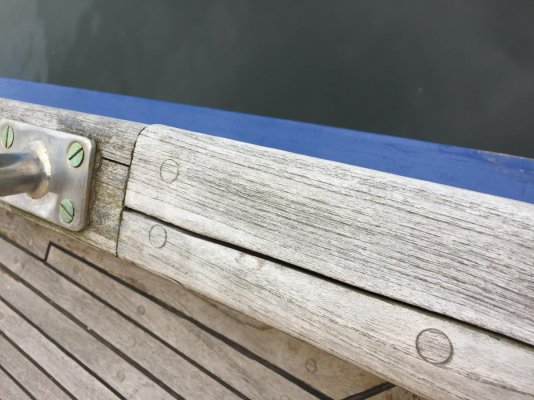Looking for advice. I have some cracks in the teak cap rails. The PO had filled them years ago, but the repairs are failing and leaks are starting. I don't know what material he used, but I am digging what's left out of the cracks so I can refill.
Question is, what do I use to fill the cracks? And no, I'm not going to the expense of replacing the cap rails, so a repair is all I can do.
I've used pre-made wood filler before for similar repairs, but that seemed difficult to work with. I've also mixed teak dust with epoxy and that seemed a little easier to control. In the end I'll end up sanding and then protect with Awlwood.
Anyone have any experience or knowledge of what I should use?
Question is, what do I use to fill the cracks? And no, I'm not going to the expense of replacing the cap rails, so a repair is all I can do.
I've used pre-made wood filler before for similar repairs, but that seemed difficult to work with. I've also mixed teak dust with epoxy and that seemed a little easier to control. In the end I'll end up sanding and then protect with Awlwood.
Anyone have any experience or knowledge of what I should use?

